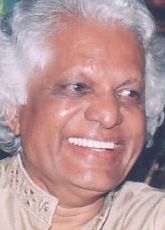I warmly commend Amos Yong’s personal touch as he elaborates the academic struggles that he has undergone, as a result of both his own Pentecostal background and the wider theological challenges. His Asian heritage, his Pentecostal background, and his sound academic background are well reflected in his essay. I must confess that I will make only some cursory comments on two basic issues from Amos Yong’s discussions that I believe call for further exploration.
Culture and Christianity
The first of these is the sensitive issue of culture, as the relationship between culture and Christianity has been an ongoing debate. I suspect that most Christian Americans (and their mission fields) have lived in a “Christ against culture” paradigm, or perhaps the “Christ above culture,” as we recall Richard Niebuhr’s classic study.1 Biblical justification for these paradigms has been drawn out of scattered verses or passages, and sometimes out of context. Culture is an inevitable part of our lives, and scholars such as N. T Wright and Andrew Walls have legitimized the need for culturally based Christianities drawing on the New Testament itself as well as church history. We still live in the aftermath of the Enlightenment’s dualistic perspective, and this needs to be corrected as we explore more integration of the church into culture and society.
Lausanne’s “Willowbank Report: Consultation on Gospel and Culture” gave Evangelicals a good start, as it asserted boldly: God created mankind male and female in his own likeness by endowing them with distinctive human faculties—rational, moral, social, creative and spiritual. He also told them to have children, to fill the earth and to subdue it (Gen. 1:26–28). These divine commands are the origin of human culture. For basic to culture are our control of nature (that is, our environment) and our development of forms of social organization. Insofar as we use our creative powers to obey God’s commands, we glorify God, serve others and fulfill an important part of our destiny on earth.2
Amos Yong describes what many of us in Asia were forced to consider in relation to our cultures. There was the Western missionary influence, and most often it labeled our Asian cultures as sinful or even demonic, while the Western culture was tacitly accepted as being Christian. This we can condone, as it was part of a wider movement in Europe in the eighteenth and nineteenth centuries, and not just a missionary perception. Human beings and their cultures are fallen, we learned, but the Western culture through Christianity (not necessarily Christ) had evolved to being superior.
Yong’s Pentecostal background does not appear to hinder him from addressing these issues courageously. We will really need to wrestle with the issue of culture far more in order to regain lost ground. Going to the Bible, the same Gospel writer, John, who said, “Do not love the world or anything in the world” (1 John 2:15), also talked about the incarnated Jesus who came into his culture. Further, there is the oft-quoted Johannine distinction of being “in the world” yet not “of the world.” The world’s culture is certainly a part of our life.
A Pneumatological Approach
Second, I was fascinated by Yong’s underlying thesis: “The gist of my contribution was to develop what I called a pneumatological approach to theology of religions. Christological categories were too particular in engaging the interreligious dialogue since they either risked imposing Christian perspectives on other faiths . . . or inhibited interfaith conversation from the get-go.” As one who has grappled with interfaith studies, I have seen how restricted we can be if our starting point is only “Christological.” I am sure that neither Amos Yong nor I will suggest that Jesus Christ should not come into the discussion. Our ultimate aim is to proclaim Jesus Christ. But for Yong “A pneumatological approach . . . appeared to be capable of advancing the discussion in at least three distinct forums: the theological, the Pentecostal, and the religious studies academies.” Our discussions need to “advance” and the suggestion promises much for future discussions.
This refreshing insight will help us stay a bit more open to the Spirit’s working in line with Jesus’s teaching. One will admit that most of our approaches to Christian attitudes towards other religions have been from the standpoint of Jesus Christ. This is not wrong! But Jesus himself promised the Spirit would speak on his behalf. The pneumatological approach has not been adequately pursued. However, we need to be reminded that these discussions have already taken place in liberal settings, as in the World Council of Churches, but the ramifications have been questionable. Sadly, the trinitarian Holy Spirit is equated with all kinds of “spirits” in the world. This has probably made us cautious and therefore we refrain from going too far into the Spirit’s outworking in interreligious discussions.
Regardless, Amos Yong is convinced that the pneumatological approach would enable more effective communication. Rather provocatively he comments, “My thesis then, and still today, is that the pneumatological symbols of divine presence, divine activity, and divine absence are distinctively but not exclusively Christian, and thus they are both usefully generalizable to the religions and yet also sufficiently vague so as to facilitate viable religious and theological comparisons and contrasts.”
In a recent book, Gary Tyra develops a biblical theology of the Holy Spirit that assists in deepening our understanding of life as the church, the people of God.3 Since the church’s mission into the world is both evangelistic and prophetic, there is greater emphasis on the working of the Spirit in our preaching, proclamation, and service. As with Amos Yong’s concern, Tyra brings together both charismatic and Evangelical emphases, and makes for a far more enriching mission than when either is taken separately. Yong’s thesis can enhance such emphases.
Pneumatology cannot be ignored. Jesus had already made the message clear and informed his disciples of their mission. They had to wait before they embarked on it: “But ye shall receive power, after that the Holy Ghost is come upon you: and ye shall be witnesses unto me both in Jerusalem, and in all Judaea, and in Samaria, and unto the uttermost part of the earth” (Acts 1:8 KJV). So, it was essential for them to receive the power of the Holy Spirit before accomplishing anything in Jesus’s name. It was through the power of the Holy Spirit that they would be communicating to the world; we could regain some of this power.
I agree that pneumatology, as long as it is not severed from Christology, could be a positive step in better communication in our interreligious interactions. If God is the Creator and the Holy Spirit works on behalf of God, then we must allow the Holy Spirit to be active everywhere in God’s creation, not just the church or with the Christian community. This same Spirit is working on behalf of Jesus Christ: “When the Advocate comes, whom I will send to you from the Father—the Spirit of truth who goes out from the Father—he will testify about me” (John 15:27). The Spirit has set us free, and we need to set the Spirit more free to speak on behalf of Jesus Christ.


